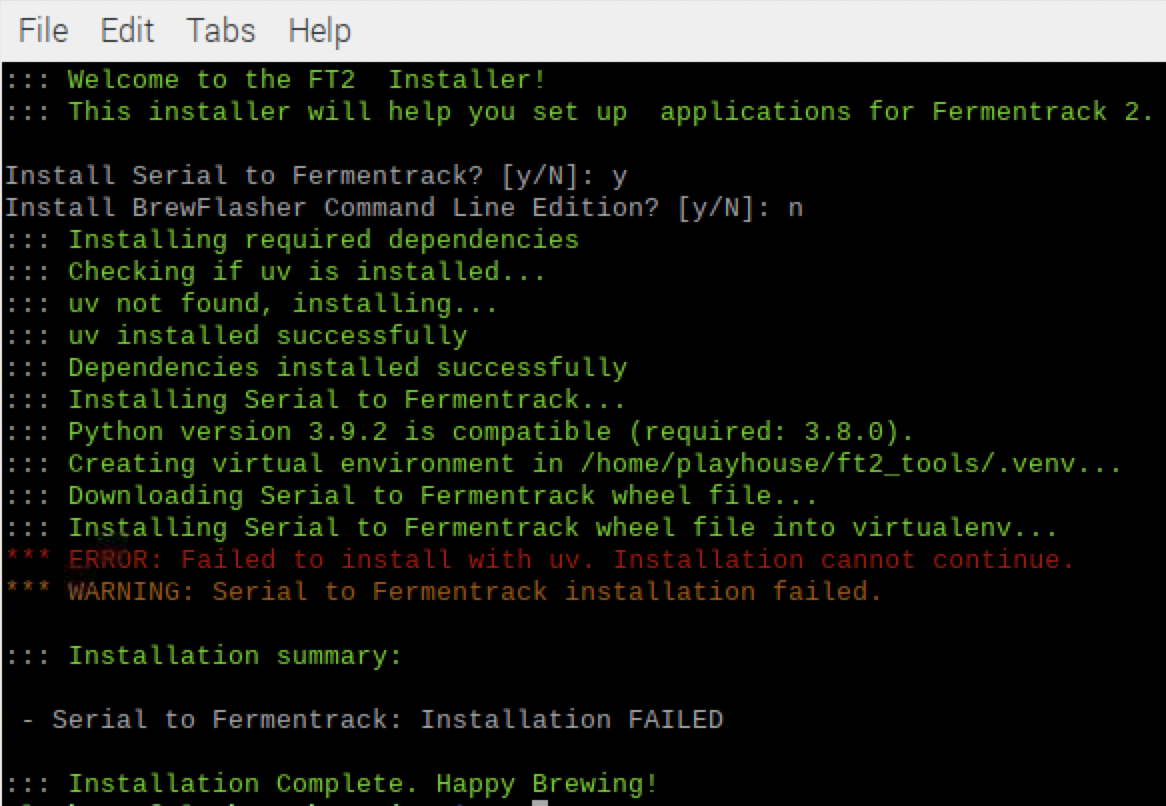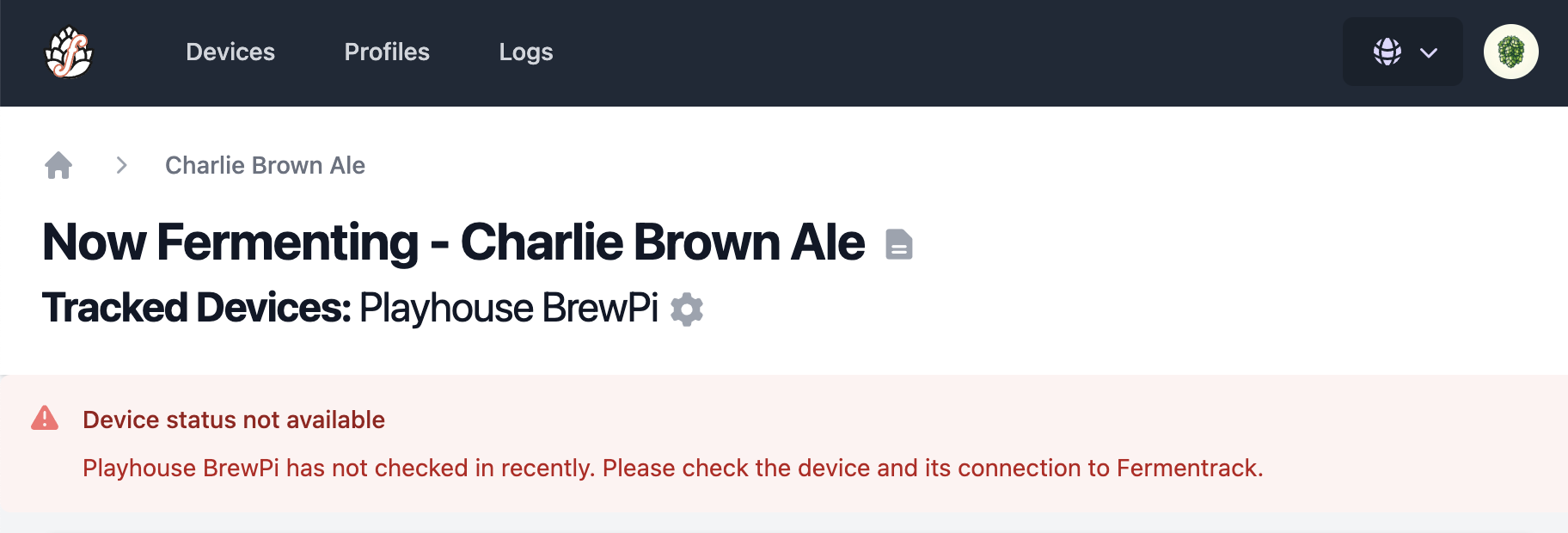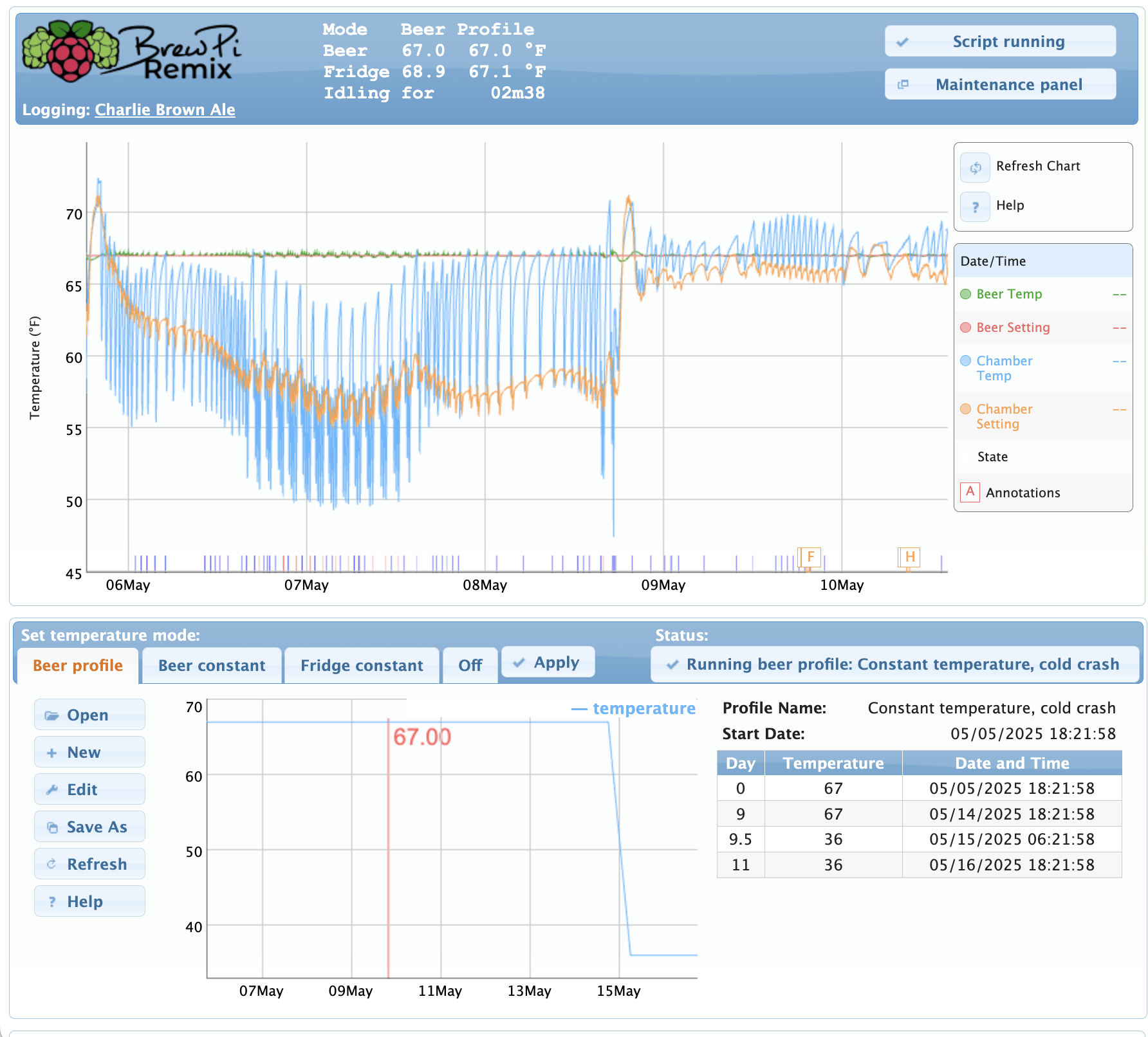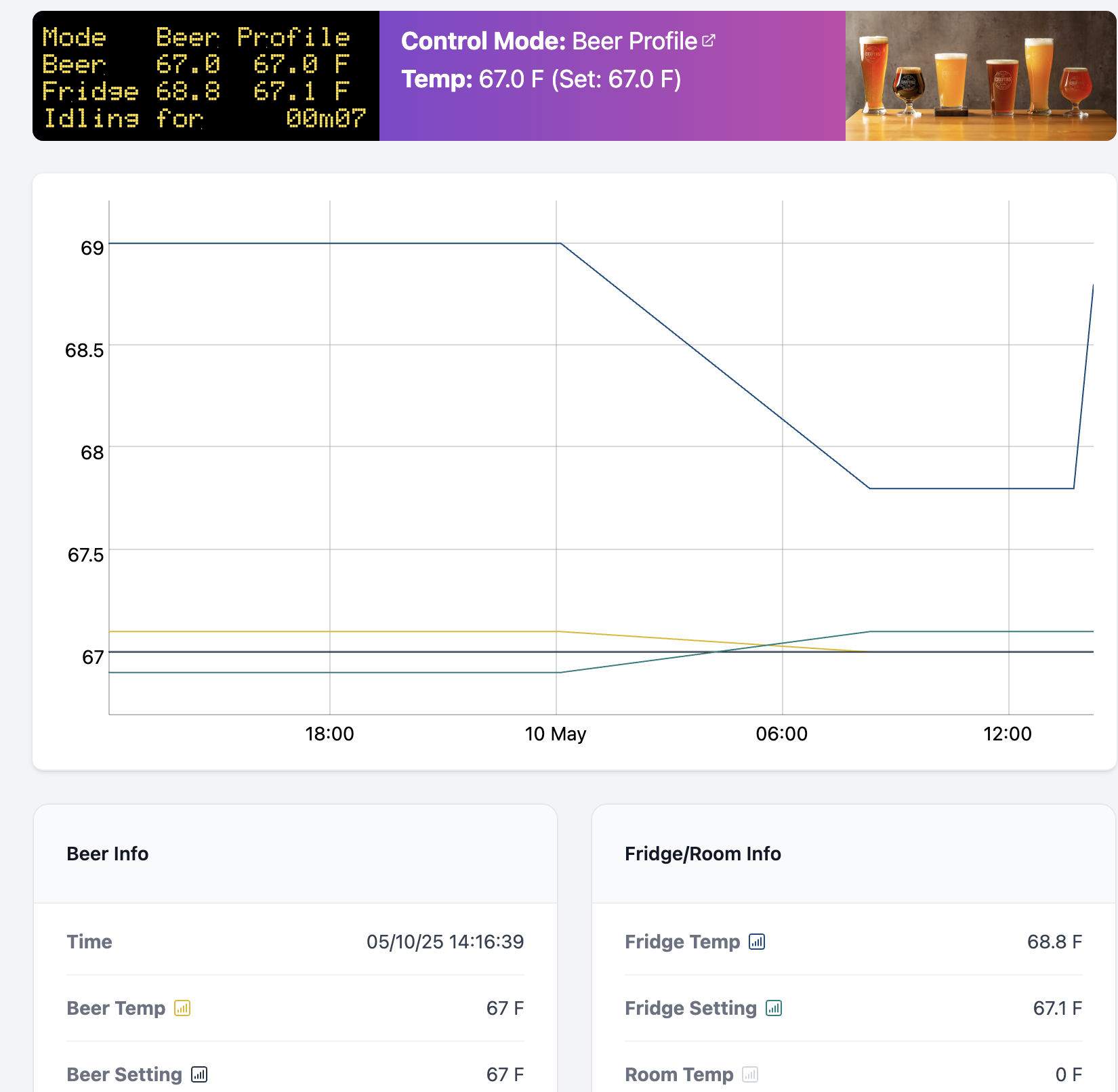If your controller had already locked up, you will need to manually kill the process to get it to exit/reconnect. The easiest way is to just
sudo shutdown -r now and reboot the Pi.
To answer your question about how things stay synchronized, it's important to understand that there's three components in your system right now:
- A physical controller running firmware of some kind (in your case, an Arduino controller running BrewPi-Remix Firmware)
- Web-based management software
- A script connecting the physical controller to the web interface
When you were using BrewPi-Remix's web interface, your stack looked like this:
Arduino --> BrewPi-Script --> BrewPi-Remix's Web Interface
Now that you're using Fermentrack 2 and S2F, your stack looks like this:
Arduino --> Serial-to-Fermentrack --> Fermentrack 2
BrewPi-Remix (the web interface) is
replaced by Fermentrack 2, so they don't even attempt to stay in sync. Settings that are managed in the
web-based management software - including temperature profiles - won't sync between the two.
To provide some background as to why: Historically, due to limitations in the capabilities of an Arduino, the temperature profiles have always been implemented by the web interface. The only things the controller knows are that the web interface is executing a profile (in order to display "Beer Profile" on the screen) and the exact temperature it is currently trying to hit. What this means in practice is that if you are partway through a temperature ramp from, say, 70F to 50F, and the point on that slope that the controller is currently at happens to be "64.5F", that is the only information it knows. It does not know that the next step would be "64.4F" - or that it will ultimately reach 50F. If you were to shut down your Pi at this stage (or terminate Serial-to-Fermentrack), you would notice that your controller would just stay at 64.5°F indefinitely.
Once you've rebooted the Pi, let me know how things get on. I've tested this release, but if you have any issues, happy to address!



















































![Craft A Brew - Safale BE-256 Yeast - Fermentis - Belgian Ale Dry Yeast - For Belgian & Strong Ales - Ingredients for Home Brewing - Beer Making Supplies - [3 Pack]](https://m.media-amazon.com/images/I/51bcKEwQmWL._SL500_.jpg)









